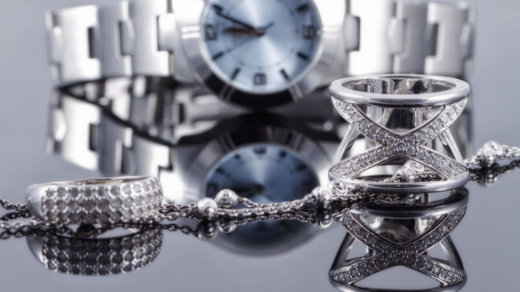How to choose a quality watch: tips and recommendations.

A quality watch is more than just a timekeeping device—it’s a style statement, a symbol of craftsmanship, and often a long-term investment. Whether you’re buying your first watch or adding a new one to your collection, choosing the right one can be overwhelming. There are many factors to consider, including the type of watch, brand, materials, features, and more. In this article, we’ll break down the essential tips and recommendations to help you choose the perfect quality watch.
Why choosing a quality watch matters
1. Long-term investment
A quality watch can serve as a timeless accessory that lasts for many years. Unlike cheaper watches that may need replacing after a few years, a high-quality timepiece is often durable and can even increase in value. Watches from prestigious brands like Rolex, Omega, or Patek Philippe can become valuable collectibles. For more information, click here.
2. Timeless style
A quality watch never goes out of style. While trends change, a well-designed, classic watch can complement any wardrobe. Whether you’re attending a formal event or simply going to work, a quality watch enhances your appearance and makes a subtle statement of sophistication.
3. Precision and durability
Quality watches are made with precise movements and durable materials, ensuring reliability over time. With proper care, they can last a lifetime and often even become heirlooms passed down through generations.
What to look for when choosing a quality watch
Choosing the right quality watch involves considering several factors. Here are some of the most important points to think about before making your purchase.
1. Set your budget
Define your price range
The first step in buying a quality watch is to define your budget. Watches come in a wide price range, from affordable to extremely expensive models. It’s important to set a realistic budget based on what you’re willing to invest. Keep in mind that a quality watch can last you a lifetime, so think of it as an investment rather than just a purchase.
Quality over price
While setting a budget is important, it’s essential to prioritize quality over price. A more expensive watch doesn’t always guarantee higher quality, but opting for a reliable and reputable brand ensures a higher level of craftsmanship and durability.
2. Choose the right type of watch
Analog vs. digital watches
There are two primary types of watches to choose from: analog and digital. Analog watches have traditional hour and minute hands, often accompanied by a date function. They are generally considered more elegant and timeless, making them ideal for formal occasions.
On the other hand, digital watches are more practical and often feature additional functions like alarms, timers, and even GPS. These are typically suited for more casual or athletic settings.
Mechanical vs. quartz movement
Another crucial factor in choosing a watch is deciding between mechanical and quartz movements:
- Mechanical watches: These watches are powered by a mainspring that must be wound by hand or through the motion of the wrist (in the case of automatic models). Mechanical watches are often seen as more sophisticated and are a symbol of traditional watchmaking craftsmanship.
- Quartz watches: Powered by a battery, quartz watches are more affordable, accurate, and low-maintenance compared to mechanical watches. They are a great option for those seeking reliability and precision.
3. Consider the brand and reputation
The importance of brand
When buying a quality watch, the brand plays a significant role in ensuring both the design and craftsmanship. Leading watch brands, such as Rolex, Omega, Tag Heuer, and Seiko, have a long history of producing high-quality watches.
While it’s not necessary to buy from a luxury brand, choosing a watch from a reputable brand can give you peace of mind in terms of quality and resale value. These brands are known for their attention to detail, reliable movements, and use of premium materials.
Luxury vs. mid-range brands
- Luxury watches: Brands like Rolex, Patek Philippe, and Audemars Piguet represent the pinnacle of watchmaking. Their timepieces often come with a high price tag but offer superb craftsmanship, exclusivity, and long-term value.
- Mid-range watches: Brands such as Omega, Longines, and Seiko offer excellent quality watches at more affordable prices. These watches are perfect for those who want high performance and design without breaking the bank.
4. Material selection
Stainless steel
The most common material for quality watches is stainless steel. It is durable, resistant to scratches and rust, and can be easily polished to maintain its shine. Stainless steel watches are versatile and suitable for everyday wear.
Gold and titanium
Some luxury watches are made from gold or titanium. These materials are lighter than steel and offer a more premium feel. Gold watches often come in yellow, white, or rose gold, while titanium watches are known for their lightweight and hypoallergenic properties.
Ceramic and other materials
Some high-end watches feature ceramic cases and bracelets. Ceramic is lightweight, scratch-resistant, and has a sleek, modern look. It is also highly durable and less prone to discoloration over time.
5. Size and fit
Dial size
The size of the watch dial plays a crucial role in determining how the watch will look on your wrist. While larger watches have become more popular, a smaller dial may be better for those with smaller wrists or a more minimalist style. The dial size typically ranges from 36mm to 44mm for men, and for women, the range is usually from 28mm to 38mm.
Strap type and material
The strap of the watch can dramatically affect its overall look and comfort. Leather straps are classic and suitable for formal settings, while metal bracelets provide a more durable and modern look. Rubber or nylon straps are popular choices for sports watches due to their comfort and breathability.
6. Additional features
Water resistance
If you plan to wear your watch in various environments, consider water resistance. Watches with a higher water resistance rating are perfect for swimmers or divers. Watches can be rated with water resistance from 30 meters (splash resistant) to 1000 meters (professional diving depth).
Chronograph function
A chronograph is a feature found in many high-quality watches, allowing you to measure elapsed time. If you need a stopwatch function, a chronograph is a handy tool to have. It’s especially popular in sports and dive watches.
Complications
In addition to telling the time, some watches feature additional complications like calendars, moon phases, and power reserve indicators. These features not only increase the watch’s functionality but also its aesthetic appeal.
Where to buy a quality watch
1. Authorized dealers
The safest place to buy a quality watch is from authorized dealers. They offer warranties and guarantees of authenticity, ensuring that you’re getting a genuine product. Many luxury watch brands only sell through their authorized retailers.
2. Online retailers
Trusted online retailers like Jomashop, WatchBox, and Chrono24 offer a wide range of quality watches, often at discounted prices. However, it’s essential to buy from reputable sources to avoid counterfeits.
3. Pre-owned market
If you’re looking for a pre-owned watch, consider platforms like Chrono24 or Watchfinder, where you can find certified pre-owned models from reliable sellers. Pre-owned watches often come at a lower price and may offer unique models that are no longer in production.



